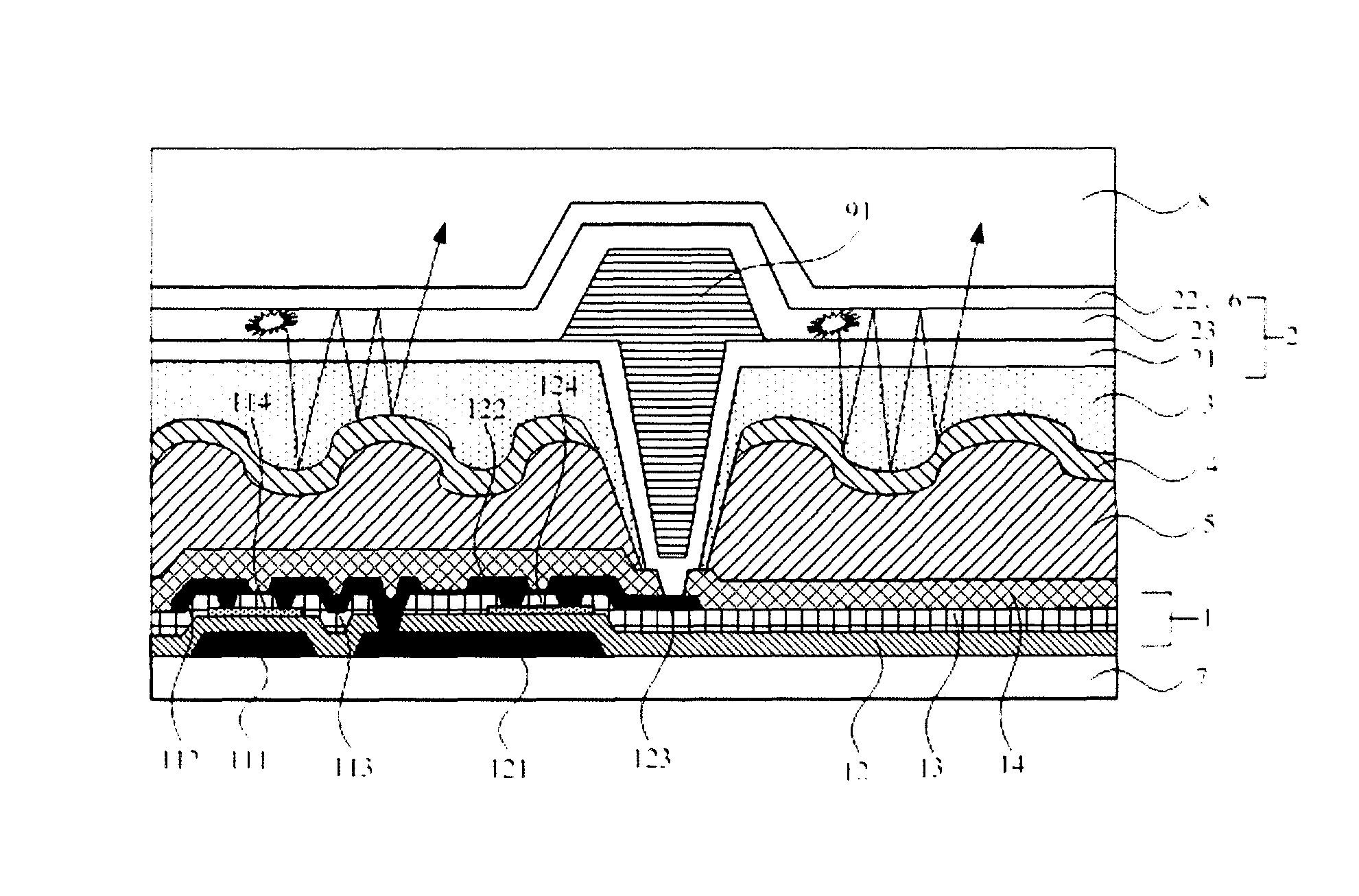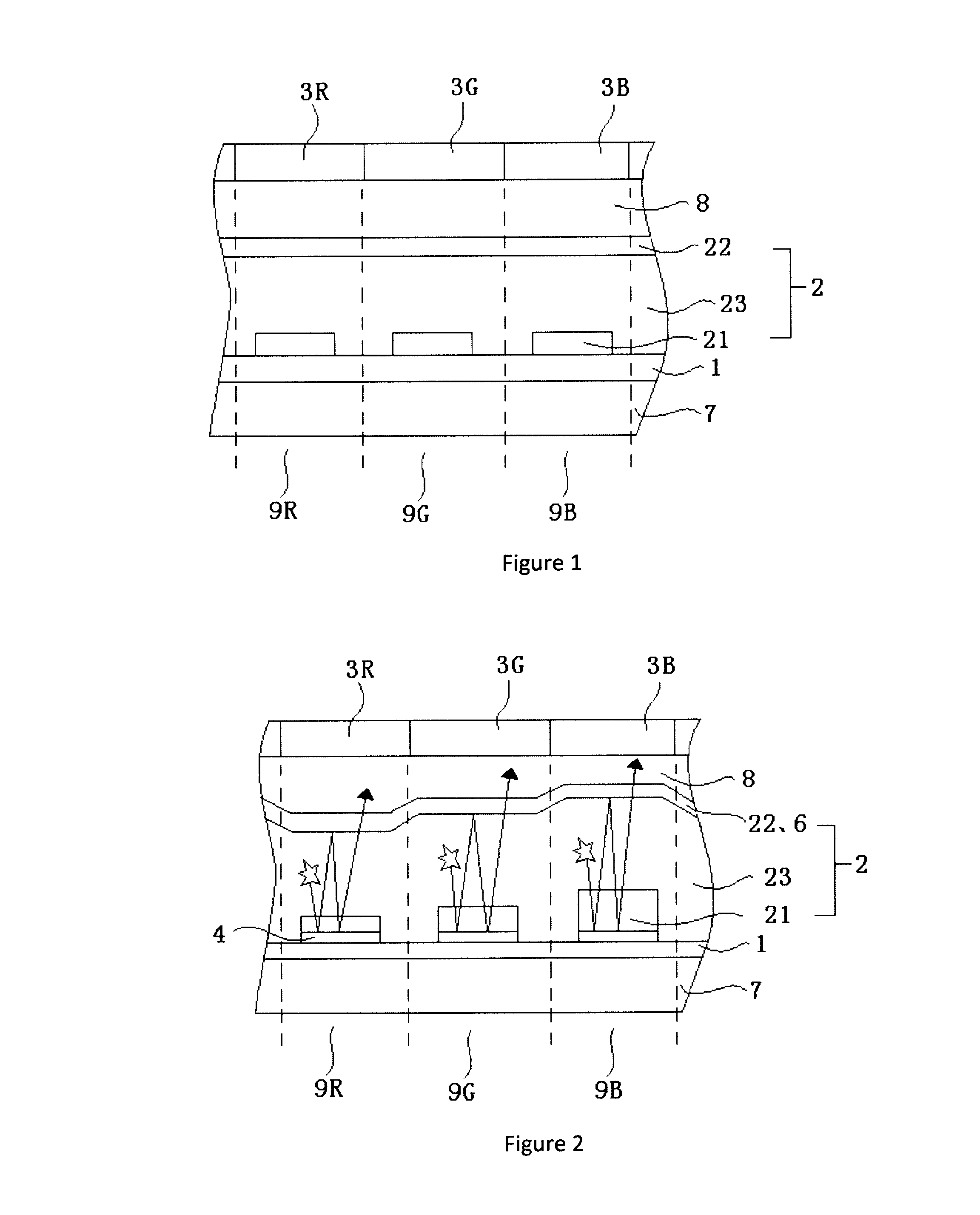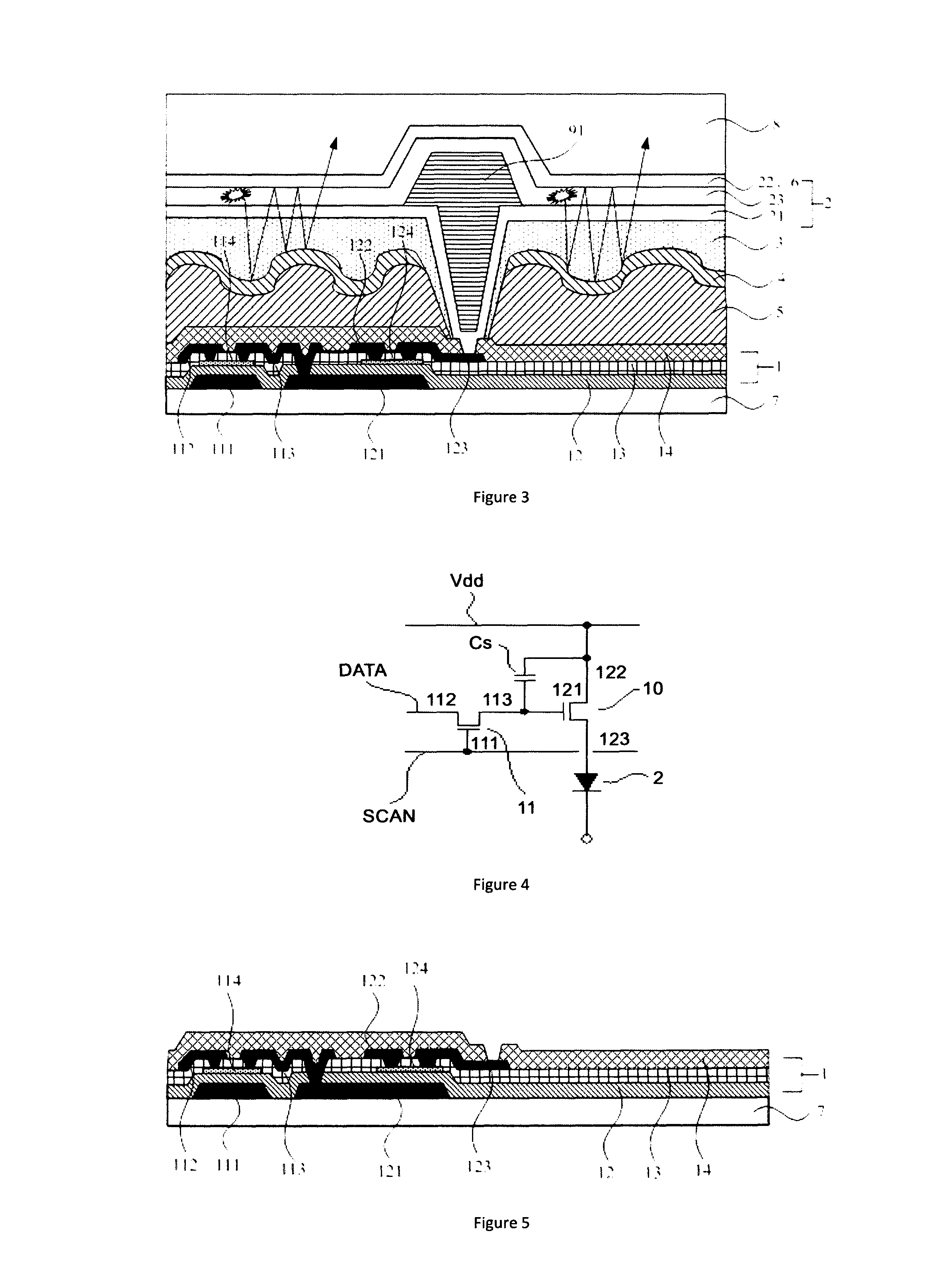Array substrate, method for fabricating the same, and OLED display device
a technology of array substrate and substrate, which is applied in the direction of diodes, semiconductor devices, electrical apparatus, etc., can solve the problems of high cost and complicated fabrication process, and achieve the effects of low cost, high luminous efficiency, and simple fabrication process
- Summary
- Abstract
- Description
- Claims
- Application Information
AI Technical Summary
Benefits of technology
Problems solved by technology
Method used
Image
Examples
embodiment 1
[0049]The present embodiment provides an array substrate, which comprises a plurality of pixel units disposed on a substrate; and each pixel unit comprises:
[0050]a TFT drive layer;
[0051]an OLED further away from the substrate than the TFT drive layer and driven by it, the OLED sequentially comprises a first electrode, a light emitting layer, a second electrode in a direction further away from the substrate, wherein the first electrode is transparent, the second electrode is a transflective layer, or the second electrode is transparent and has a transflective layer disposed thereon;
[0052]a reflection layer, which is disposed between the TFT drive layer and the OLED and forms a microcavity structure with the transflective layer, and a reflective surface of the reflection layer has a concave-convex or corrugated structure disposed thereon for causing diffuse reflection of light; and
[0053]a color filter film disposed between the reflection layer and the OLED and located in the microcavi...
embodiment 2
[0055]As illustrated in FIGS. 3 and 4, the present embodiment provides an array substrate, which comprises a plurality of pixel units on a substrate 7, wherein a plurality of adjacent pixel units having color filter films of different colors forms one ‘visible pixel’ on a display. Herein a color filter film 3 may have various color modes. Preferably, the color filter film 3 comprises a red filter film, a green filter film, a blue filter film (the RGB mode). Alternatively, the color filter film 3 comprises a red filter film, a green filter film, a blue filter film and a white filter film (the RGBW mode). Alternatively, the color filter film 3 comprises a red filter film, a green filter film, a blue filter film and a yellow filter substrate (the RGBY mode).
[0056]As illustrate in FIG. 3, the array substrate sequentially comprises a TFT drive layer 1, a resin layer 5, a reflection layer 5, a color filter film 3, an OLED 2 and an encapsulation layer in a direction further away from the s...
embodiment 3
[0078]The present embodiment provides a method for fabricating an array substrate, which comprises the following steps:
[0079]forming a pattern comprising a TFT drive layer on a substrate;
[0080]forming a pattern of a resin layer on the substrate subjected to the previous step, and forming a concave-convex or corrugated structure on the resin layer;
[0081]forming a pattern comprising a reflection layer on the substrate subjected to the previous step, an upper surface of the reflection layer having a concave-convex or corrugated structure for causing diffuse reflection of light disposed thereon, which is corresponding to the concave-convex or corrugated structure on the resin layer;
[0082]forming a pattern comprising a color filter film on the substrate subjected to the previous step;
[0083]forming a pattern comprising an OLED on the substrate subjected to the previous step, such that the reflection layer is opposite to the OLED, and the color filter film is disposed between the reflectio...
PUM
 Login to View More
Login to View More Abstract
Description
Claims
Application Information
 Login to View More
Login to View More - R&D
- Intellectual Property
- Life Sciences
- Materials
- Tech Scout
- Unparalleled Data Quality
- Higher Quality Content
- 60% Fewer Hallucinations
Browse by: Latest US Patents, China's latest patents, Technical Efficacy Thesaurus, Application Domain, Technology Topic, Popular Technical Reports.
© 2025 PatSnap. All rights reserved.Legal|Privacy policy|Modern Slavery Act Transparency Statement|Sitemap|About US| Contact US: help@patsnap.com



